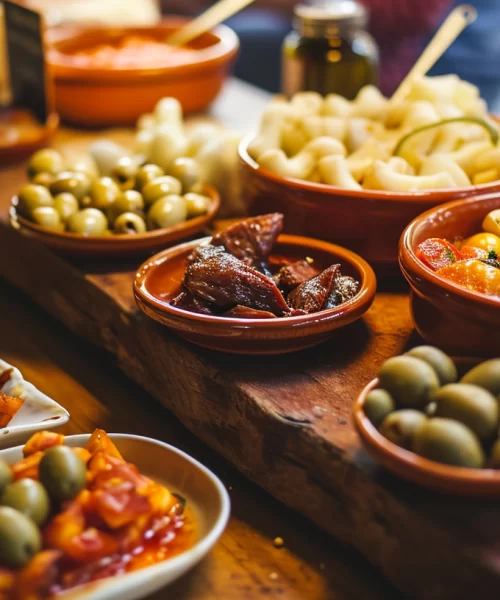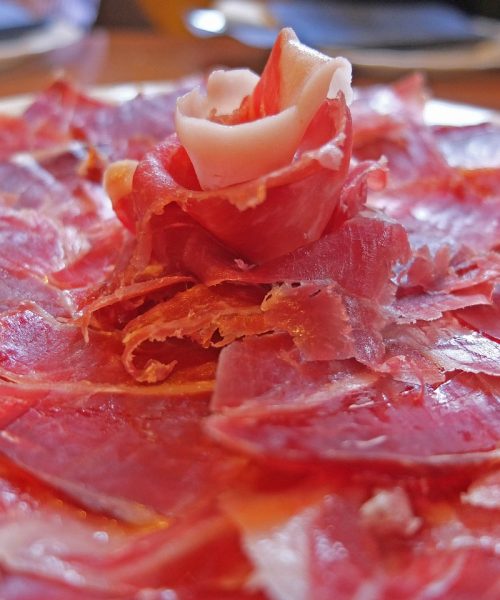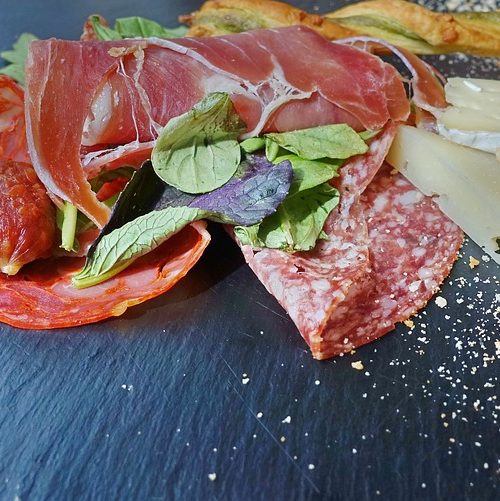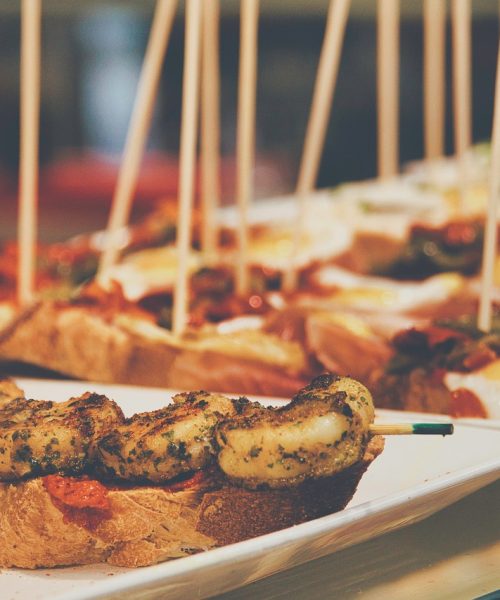How to Find the Best Tapas Recipes in Spain
Whether you’re an experienced tapas enthusiast or an aspiring one, you probably know that tapas are a great way to taste the flavors of the Spanish countryside. There are dozens of tapas recipes that can be made using fresh, local ingredients. But how do you know which recipe to choose and where to find the best tapas?
Origins
Depending on which part of Spain you visit, there are many different legends about the origins of tapas. Tapas is a general term for a small snack that is usually served alongside a drink. It has become popular worldwide and is a major component of Spanish culture. In addition to being a great way to enjoy a drink, tapas can also be a good way to interact with other patrons.
Many Spanish locals claim that tapas originated in their region. For example, the region of Andalucia in south Spain is known for its tapas tradition. Some accounts even claim that tapas originated in Medieval times. However, most of these tales have not been proved to be true.
The history of tapas is full of legends and urban myths. One legend states that the first tapas were served in a restaurant called Ventorrillo. This restaurant is located in the southern city of Cadiz. The restaurant remains open to this day. It is also said that the restaurant was visited by King Alfonso XIII. He liked the drink and the slice of ham on top.
Another story has it that tapas was invented in a farmers’ bar in Seville. Tapas were originally served free of charge. This was a way to keep rowdy patrons away. Tapas were also a marketing ploy for the bartenders. They realized that a saucer could be a great way to accentuate the aroma of the wine.
The origins of tapas may have started with the need to serve small meals throughout the day. This is due to the fact that Spanish summers can be hot. In order to avoid getting tired, farmers needed to eat small meals during the day. In fact, the Spanish government recommended this dietary practice, believing that it would help prevent people from overeating.
The Spanish government also believed that food and drink would help promote a mellow mood, which would help to sober up rowdy guests. A popular drink in the south is gazpacho. This drink has Moorish roots and is often balanced with sweet fruit.
Varieties
Throughout Spain, there are many bars and bistros that specialize in tapas. Tapas are small portions of food that are usually served hot or cold and include beer or wine as an accompaniment.
Tapas can be made with a wide variety of ingredients and are a great way to try new things. Tapas are often eaten at the end of a meal and can provide a variety of textures and flavors. Some of the most popular tapas include croquetas, patatas bravas, and gambas al ajillo.
Tapas can also be served as a full meal. These bite-sized dishes can be eaten alone or with friends. Some tapas are made with fresh seasonal ingredients. A few tapas are vegetarian.
These small snacks are a great way to try a variety of different dishes without spending too much money. Tapas are popular in Spain and have even made it to the United States.
A popular tapas dish is ham croquettes. These little meatballs are a fun way to try new things. Some versions of this dish include beef and pork. If you are vegetarian, you can try espinacas con garbanzos.
Another popular tapas dish is paella. Paella is a traditional Valencian dish. This dish has a seafood version as well. It is served in a paella pan and can be eaten as a meal or an appetizer.
Another dish is octopus. This dish is cooked in boiling water and seasoned with substantial amounts of paprika. It is served in olive oil. It can also be grilled. Some versions of this dish include sea salt.
Other favorite tapas are croquetas, patatas, and flan. These are all simple dishes to make. You can also try a few dishes at the same time to make a full meal.
Tapas are great to eat when you want a quick and light lunch or a nice evening out with friends. The best accompaniment to tapas is beer or white wine. You can find hundreds of varieties of tapas in restaurants and small bars across the world.
Tapas are also an important part of Spanish culture. They are served in bars and restaurants, and often are free with drinks.
Sherry as an aperitif
Traditionally served with tapas, Sherry is a great choice for an aperitif. It’s a crisp and dry wine with a unique nutty taste. You can serve it with a cheese board, asparagus, olives, pasta salads, and even smoked salmon. It’s also good with ice cream and dark chocolate.
Sherry is a fortified wine made from a variety of grapes. The grapes are dry-grown before being vinified. The oxidation process gives the wine its rich, amber colour. Sherry is produced in Jerez de la Frontera, Cadiz, and San Lucar de Barrameda. Known as Sherry Triangle, these three wine producing areas form a triangle.
Sherry is a dry wine with an aromatic nutty, yeasty, and salty taste. It’s often served in a glass that looks like a champagne flute. It is often served chilled, which helps the aroma of the sherry to come through.
Sherry can be served with a wide variety of foods, and it’s best to pair it with fish that swim or swim and walk. Sherry is also good with olives and salted nuts. It’s best served with a small amount at a time, or in the aperitif style with tapas. Sherry is a great choice for a casual night out with friends.
Sherry comes in many different styles. Fino and amontillado are often the most common, but there are also more unique styles. You can also find sweet sherries that are perfect for dessert. Among the sweeter styles are Oloroso and cream sherries.
When choosing sherry as an aperitif, the first thing you’ll need to decide is the type of sherry you want. There are two main types, Fino and Oloroso. Oloroso is a richer, fuller-bodied sherry. It has twice the amount of volatile acidities of Fino sherry. It is also richer, with a more nutty, salty taste. Oloroso can be served in wider glasses.
It’s also important to keep in mind that sherry is very easy to drink. It’s light in colour, isn’t sweet, and has a nutty taste. It’s also less expensive than other wines. Most sherries are less than $20 a bottle.
Eating times
Traditionally, tapas were small snacks served to local agricultural workers. King Alfonso X of Castile prescribed that he would drink several glasses of wine during the day and eat small amounts of food as often as possible.
Tapas originated in taverns in Andalucia. Today, they can be found all over Spain. Most tapas are shared dishes and are typically eaten standing up at the bar.
Generally speaking, tapas are eaten at the end of the day, or in the late afternoon. The food served is small, and they are meant to keep the hunger at bay until dinner. A typical Spanish tapa includes cured ham, apple slices, quince jelly, and manchego cheese. These items are served on small plates, often on top of a bread or potato chip.
Spanish people usually do not order dessert after tapas. However, there are a few desserts to choose from. Rice pudding, flan, and rice pudding are all classic Spanish desserts. Some Spanish bars offer ice cream. You can also visit a churros stand.
The best time to visit a tapas bar is around 5 or 6 p.m. These bars are usually packed with locals. You will want to sit down to enjoy the atmosphere. It can also be a good idea to find a table that has an open area. If you are new to the concept, it can be a bit confusing to figure out where you are supposed to sit.
If you have trouble determining what you are supposed to order, the bar staff will usually be happy to tell you. Spanish people often order “pintxos” when they are standing at the bar. These are small bites of food served skewered with cocktail sticks. They cost between 2.50 and 5 EUR each.
In addition to tapas, Spanish bars often serve coffee and juice. These are also good snacks to have while you wait for your meal. Many bars also serve breakfast and lunch. Some bars stay open from 5:00 to 8:00 to serve drinks.
When you are ready to order, be sure to ask if the food is cooked in the kitchen or in the bar. Some bars will also have specials listed on their blackboard. Some bars will even serve a shot of orujo, a strong liquor from Galicia.





